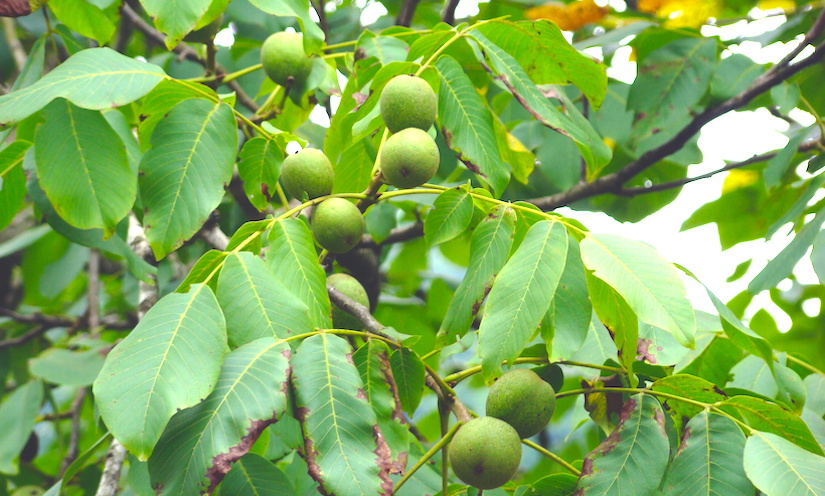Photo credit: Google
Juglans regia ‘Franquette’
SOME FEATURES OF THE SPECIES OF THE GENUS JUGLANS L. IN THE CONDITIONS OF BRYANSK OBLAST
by Sorokopudov V. N., Nguyen T. C., Shlapаkova S. N., To T. B. T. (2015)
in ISJ Theoretical & Applied Science 03 (23): 49-54.
Abstract:
The genus Juglans, family Juglandaceae, comprises several species. It is widely distributed throughout the world. Green walnuts, shells, seeds, barks, and leaves are used in the pharmaceutical and cosmetic industries. Leaves are easily available in abundant amounts.
The analysis was conducted for several purposes. Firstly, the elemental compositions of various parts of the leaves and immature fruits of four species of the genus Juglans L, growing in the conditions of Bryansk region was determined.
Ten elements were detected by using electron-ion raster scanning microscope «Quanta 200 3D» in nanocenter NIU “BSU” and percentages of macronutrients and micronutrients in the leaves and immature fruits were determined. The analysis was also conducted to determine quantification of various substances: flavonoids, organic acids, vitamin C, antioxidant activity, dry matter, chlorophyll, carotenoid, free and bound water. This data can be used in the pharmaceutical industry. Secondly, the morphology and anatomy of the leaf and water-holding capacity of four species of the genus Juglans L were also identified. Therefore, this result can prove the difference among the species of the genus Juglans L.
————
2. Drought resistance of some species of the genus Juglans L. in the conditions of Bryansk oblast.
Stomata play an important role in adaptation processes in different conditions and also in the plant productivity.The stomatal apparatus of four species of the genus Juglans L has an anomocytic type. Stomata are randomly arranged on the leaf surface. Guard cells dominated the principal cells of the epidermis is observed on the leaf surface of the walnut Juglans mandchurica. Stomata of the walnut Juglans regia, Juglans nigra, Juglans cinerea are located in the same level with the main cells of the epidermis (Fig. 1 to 4). Additionally, stomata are found only on the lower side of the leaf. The number of stomata per unit area on the leaf surface varies between 81- 115. It depends on the type species. The highest number of stomata is observed on the leaf surface of the walnut Juglans cinerea, they also have the largest size of stomata (Table 5).
Read the full article: ISJ Theoretical & Applied Science
